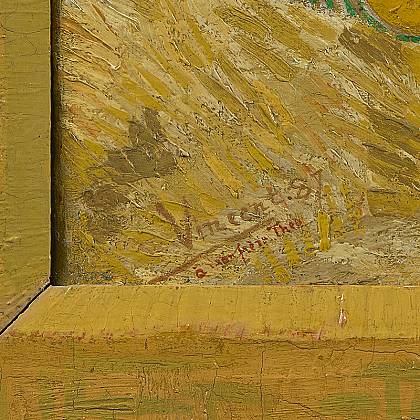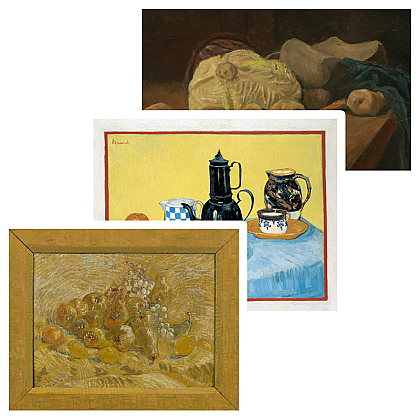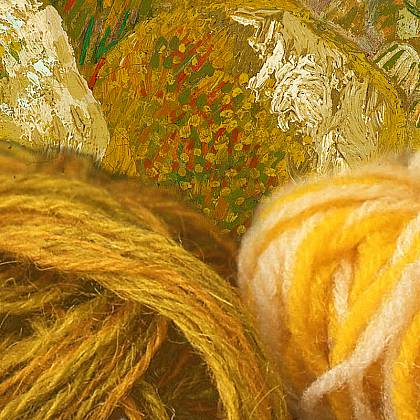A Remarkable Journey
Quinces, Lemons, Pears and Grapes
Two old labels on the back of the frame tell the story of this painting's remarkable journey. After the death of his brother Theo, Van Gogh's artworks came into the possession of Theo’s wife, Jo. She settled in Bussum, in the central region of the Netherlands, in 1891.
She stored most of Vincent's paintings in the attic. Sometimes she provided them on loan for exhibitions. On one such occasion this painting was sent off in a train. This is clear from the transport labels, bearing stamps for Bussum station.
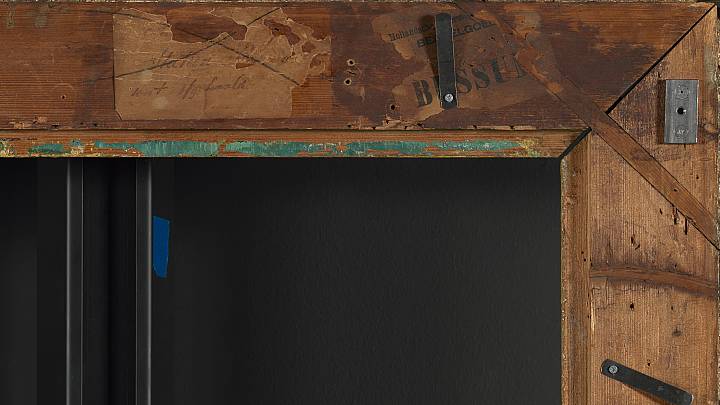
Two labels on the back of the frame. The green paint comes from the landscape that Van Gogh had painted on the canvas before painting his Quinces over it.
Train journey
Address labels were usually attached to the transport chest. But at the beginning, Jo asked the house painter to come and get the works she had agreed to supply on loan. He put the paintings in a handcart and took them to the station. He placed them in straw-lined 'glass boxes': wooden frames that were normally used to transport panes of glass. This meant that the transporters could easily read the labels on the back of the frame.
Labels of this kind usually vanish with the passage of time, for instance because a painting is re-framed. In this case they were preserved, because the frame was painted by Van Gogh. It is an integral part of the painting and will therefore never be replaced.
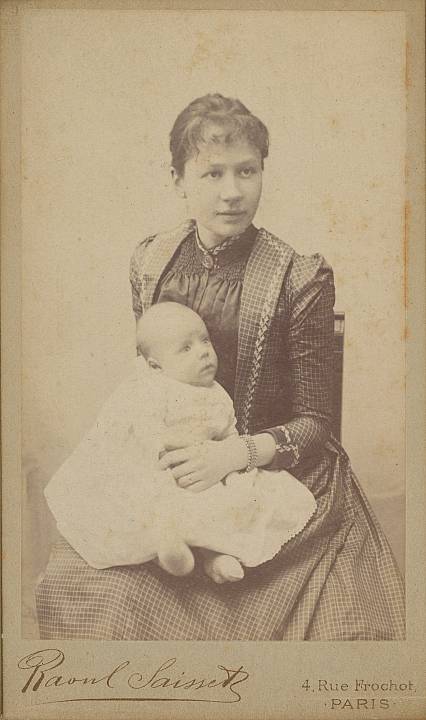
Jo Van Gogh-Bonger with her small son Vincent Willem.
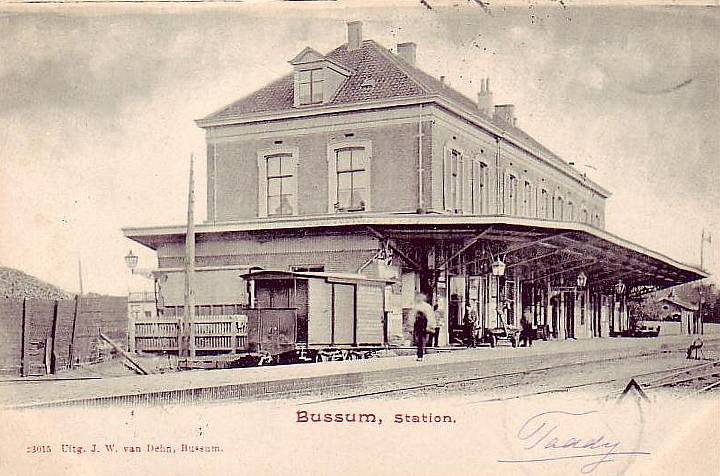
Old picture postcard of Bussum station, c. 1900
Transport today
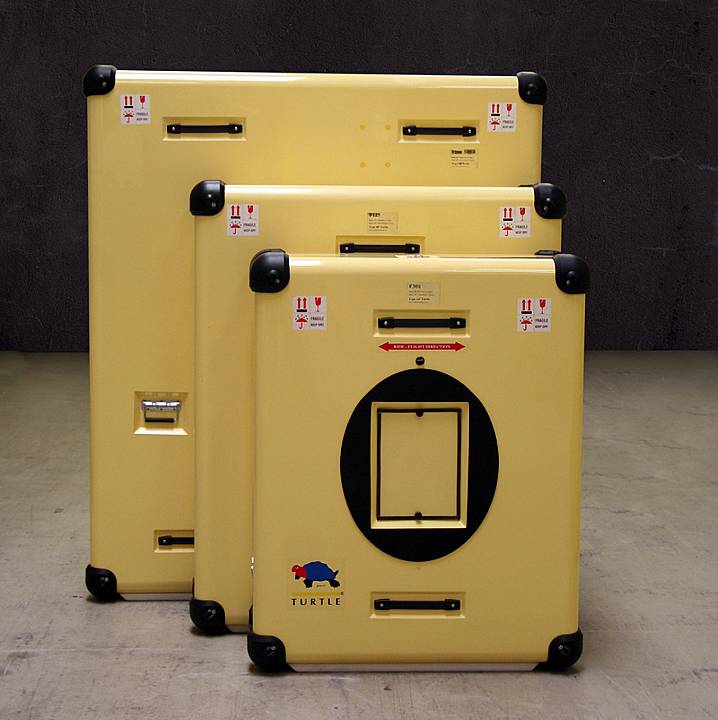
The transportation of artworks is arranged very differently today. Museums hire companies that specialize in transporting art. The paintings are carefully packed in shockproof, climate-controlled containers.
